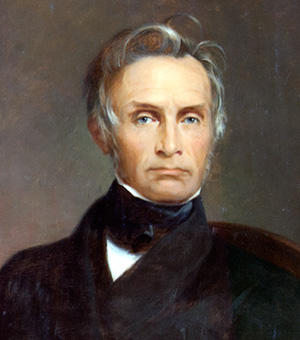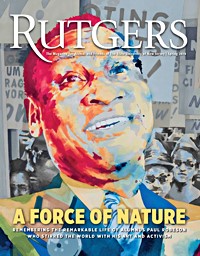Theodore Frelinghuysen
Rutgers President, 1850 to 1862

Frelinghuysen’s rise in the legal profession was brisk. By 1812 he had an extensive and lucrative practice in the city of Newark and that brought him into political life. His abilities as a lawyer and his personal character were so well recognized that he was made attorney general of New Jersey in 1817. Reelected by the legislature in 1822 and 1827, he served admirably until his election to the United States Senate in 1829. Though only in Congress for a single term, he gained national prominence and recognition. In 1836 and again in 1838 he was elected mayor of Newark but resigned in 1839 to become the chancellor of the University of the City of New York (New York University). In 1844 he made his last appearance in a political role as the unsuccessful vice presidential candidate of the Whig Party, headed by his friend Henry Clay.
An educator and social reformer, Theodore Frelinghuysen served as a United States Senator and as mayor of Newark before becoming president of Rutgers College.
In 1850 the trustees of Rutgers College looked upon the 63-year-old Frelinghuysen with admiration and respect when they chose him for the presidency. Enrollment of students had declined over the past decade, and the problem of obtaining adequate resources persisted. There appeared among the public great apathy to the college, and the trustees placed the blame on the faculty. By 1859 all were replaced except professor George H. Cook, who had joined the faculty in 1853. In an effort to stimulate interest in the college among the students, individual trustee members created separate prize funds to be awarded at commencement to seniors for distinguished work in composition, natural sciences, classical studies, and mathematics.
Curriculum changes were few during these years. Frelinghuysen lectured on international and constitutional law and gave the senior course in moral philosophy and rhetoric. Classical training prevailed at Rutgers during these years, to the delight of its president.
Throughout the decade of the 1850s, students came in greater numbers to New Brunswick, a city in the midst of transformation and already closely tied to the commercial metropolis of New York. By 1861, prior to the outbreak of the Civil War, Rutgers had nearly doubled in size from that of 1850. Such high enrollments in both the college and the theological seminary created overcrowded conditions in Old Queens, prompting the Reverend William H. Campbell, professor of oriental language and literature and belles lettres, to admonish his students and fellow instructors to demand new facilities. The church synod acquired funds from Mrs. Anna Hertzog of Philadelphia to erect a spacious building one block north of the campus. In 1856 all seminary work was transferred to Theological Hall, marking for the first time the physical separation of the college from the church.
As Rutgers entered the new and troubling decade of the 1860s, Theodore Frelinghuysen’s association with the college came to an end with his death on April 12, 1862, at the age of 75. “A man of noble qualities, whose entire life was governed by a deep religious sensibility,” wrote Professor Richard P. McCormick, “he symbolized in his passing the end of a distinctive era in the history of the college.” A new era was dawning, one that demanded fresh insight into the role of collegiate education within the state and nation.
This biographical sketch was authored by Thomas J. Frusciano, Rutgers University Archivist. It originally appeared in The Journal of the Rutgers University Libraries.

